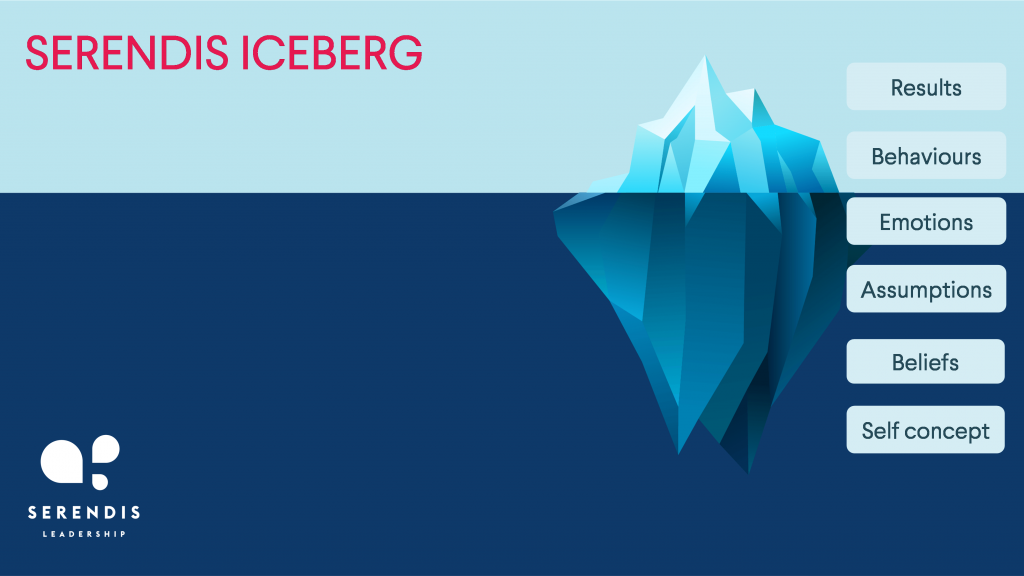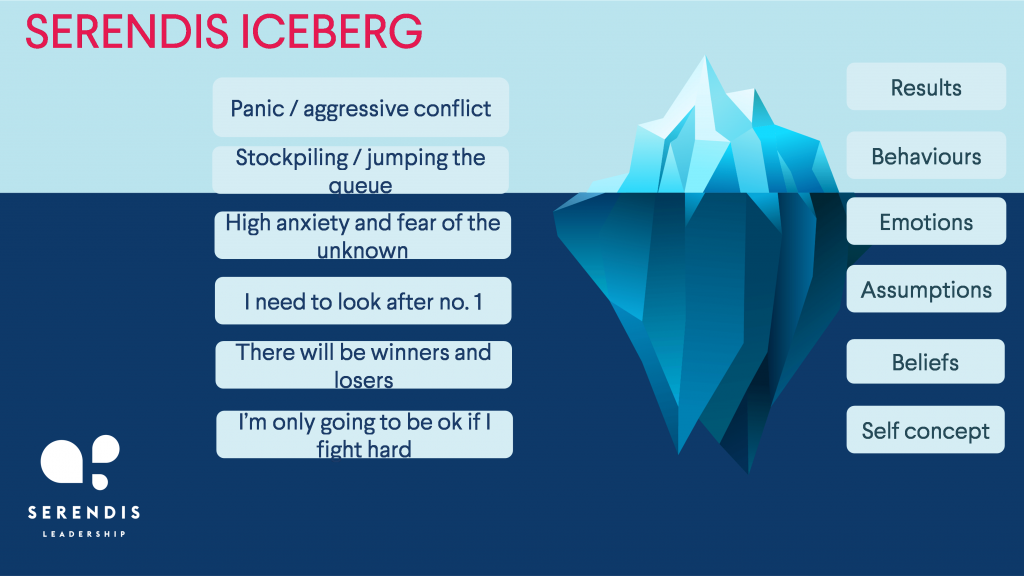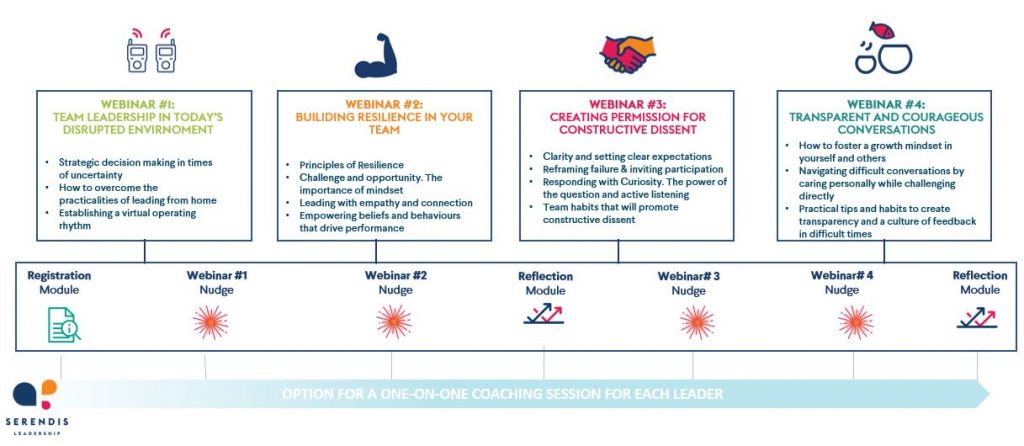Following our first exercising leadership from home blog, this second blog shares an approach to help leaders strengthen resilience, so you can bring higher levels of resourcefulness to your conversations, interactions and thinking, and also bolster trust and cohesion in your team.
The Stories We Tell Ourselves
“Don’t believe everything other people tell you” was a helpful piece of advice my parents told me when I was young boy. It’s a saying that parents across the world tell their children.
And it’s a saying I now share with my kids. Especially when they regale me with incredulous stories of the breathtaking freedoms enjoyed by their friends – of unlimited screen hours each day, of friends’ going to bed when they choose in bedrooms awash with Xboxes, Ipads and Iphones.
Recently, a colleague let me in on some profound advice. “Don’t believe everything you tell yourself” she said.
See, our brains have this tremendous ability to create stories to help us make sense of our world, of how we fit into it, of other people’s behaviour, of our emotions and experiences.
As humans, we are easily seduced by the stories we tell ourselves, even when they are unhelpful and unfounded. And we unconsciously use them as a basis to frame the world around us, our place in it, and as a guide for our emotions and actions.
What if, rather than a story choosing us, we could choose the story to tell ourselves?
And what if, we chose stories that help us be our most resourceful and productive, even in testing situations?
I’m not suggesting fabricating bogus stories by the way, but ones grounded in our own truth.
Getting clear on the story you are telling yourself is a first step in strengthening resilience and resourcefulness
I was talking to a client yesterday who was sharing how flummoxed he was by the seeming irrationality of some of the behaviour around us all. Then he said something that stopped me in my tracks … that a strange feeling had come over him, it was vague and low grade but it was as if he had forgotten something.
I probed to understand what he meant, and he started talking. I asked if he felt if he was going to be okay. Yes, he said… well maybe, I don’t know.
At this point I knew we had to go deeper to understand what was going on. I did this by exploring what beliefs and assumptions he had swirling around his head. This exercise may seem simple but it is extremely powerful because once you have articulated what is going on in your head you are better placed to make a choice to reframe it, to tell yourself a different story.
I first asked him to name the emotions he was experiencing. It is obvious but helping the person verbalise their emotional experience is the first most important step in this journey. My client shared that he was feeling anxious and had trouble sleeping properly. I then asked him to think about emotions as messengers. What are they trying to say? He started talking almost with a different voice…as if he was surprised to hear this…as if the messengers were finally being given a voice.
‘I am going to be left out, I fear that I will lose and be at risk, that I will not be able to look after my family.’ I helped my client see that this was a product of his assumptions. I then decided to dig a little further and asked if he had had these experienced in different situations and I asked him to think about the deeper beliefs that would trigger or underpin these assumptions. Again, this came out very easily, but it was clear he had never expressed this in that way before. These statements are such integral parts of who he is that he had never dissociated them from his own reality.
‘Ultimately everyone looks after themselves…in the end it will always be a battle of the fittest and I never win this game’. This deep seated belief is probably shaping and filtering every single decision or interactions he has with people. We talked about the difference between a rational approach and a deeply held unhelpful belief. He left our session with a sense of renewed confidence and a commitment to gently notice every time this belief would pop up to reframe it and choose a more helpful story. His more helpful story was ‘we are stronger together and my friends and colleagues will choose to collaborate and help each other’.
The best way to deal with stories that lie beneath is to talk about them, to unmask them and get them out in the open. We all have a unique story of this strange reality that we are living right now, but there will also be a lot of common ground.
Helping your team notice the stories they are telling themselves
Here’s a simple recipe to peal the onion on what is going on for the people in your team, in doing so you will build your individual and collective resilience. At Serendis we use the analogy of the Iceberg to explore these stories.

Follow these simple steps to create a powerful connection within your team:
Show them the Iceberg example we’ve laid out here and give them five minutes to reflect on their own Iceberg.
Specifically, ask them to think about the emotions they are currently experiencing. Ask them to reflect and articulate the assumptions and beliefs they have about the current situation, and how these influence their behaviours and their choices.
Ask each person to tell their story.
Make sure you share your own iceberg too. Perhaps you can even share first so that you set the tone and make people feel comfortable in being vulnerable. I guarantee more will bubble up than you think. Once we know what is going on for each other, trust levels will increase and your team will band together rather than divide through this strange time.
As leader of the team you will be the best judge whether your team is best placed to have this conversation together, or its best to have this conversation in your 1on1s with each team member.
Below is an example we have seen.

Reframing our stories to unlock resilience and resourcefulness
I’ll use an example to illustrate the key steps in this process.
The situation you are faced with is that your company’s primary sales channel has collapsed. This has caused revenues and cash-flows to take a 40% year on year hit already by the end of March 2020.
You have been appointed by the Executive to lead a cross-functional project team to extend the scale of your secondary sales channels, and quickly establish new routes to the “Covid 19 shutdown” market.
You will chair the first project meeting later today and you are feeling anxious and apprehensive.
Step 1 – As above, identify the stories you are telling yourself
Let’s say these are:
- “I’ve had limited experience establishing new routes to market”
- “This work is so important to our business that it should be led by one of the Executive team, and not by me”
- “If this project doesn’t start getting runs on the board quickly, my position is in jeopardy”
- “Others think this too, and may undermine me by not contributing fully on this project”
Step 2 – As above, identify the emotions, behaviours and results this story will drive
In this instance, you think the following may happen:
Your confidence will drop and your fear, stress, and self-protection levels increase. A lacklustre kick-off meeting will ensue. It will fail to engage the ideas, energy and motivation of several people. People will walk away from the meeting unclear what their roles are on this project and next steps.
Clearly this is not a desirable outcome.
Step 3 – Relabel the story you are telling yourself
You do this by telling yourself “I’m not the right person to lead this project” is an unhelpful and unfounded story.
It might be seductive, but you will consciously choose not to buy into this story, and will notice when it surfaces.
Step 4 – Reframe to a more resourceful narrative
On reflection, you recognise a different set of stories exist, all of which are grounded in truth. In this instance these are that:
- “The Exec have full trust and confidence in me to mobilise a team to solve this business problem”
- “I might not know too much about new routes to market yet, but I have successfully solved complex problems before and have a great team I can lean on for support”
- “We will all learn and grow through this experience, have setbacks along the way, and be proud of our contributions”
- “I will approach this first meeting differently, focusing on harnessing people’s ideas, energy and strengths”
Starting now you will consciously hook into these stories
In conclusion
Beware the stories you tell yourself. Many ARE in fact healthy and helpful. But not all. Outlined above is a practical approach to help you reframe narratives to help you and your teams be more resourceful and resilient, especially in challenging times.
Exercising Leadership from Home…
Information in this blog links to the second of four webinars several clients are working through with Serendis. See information about the program below and let us know if you want more information. Contact us on info@serendis.com.au




